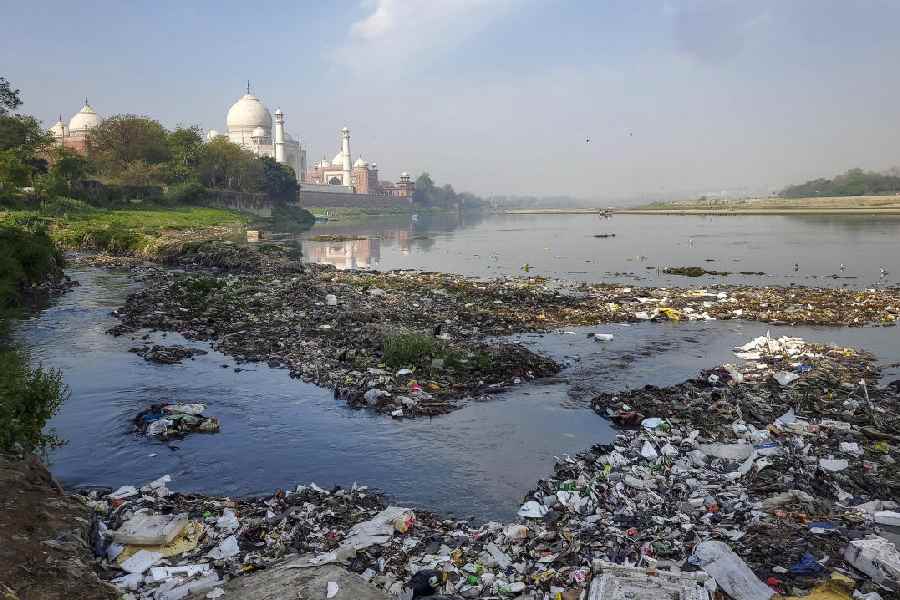A 12km stretch of the Yamuna riverbed near the Taj Mahal has the highest concentration of highly toxic microplastics compared to the other three segments sampled in a study conducted by environmental think tank Centre for Science and Environment (CSE).
The study has identified runoff water from washed clothes, small pieces of fabric, plastic packaging materials and tyres as major sources of microplastic pollution.
Microplastics are smaller plastic particles ranging between 1 nanometre, which is at least 80,000 times thinner than a hair follicle, and 5mm. They have the potential to trigger a range of health issues with long-term exposure and cause significant ecological hazards.
The report, which was cited during a meeting at the Anil Agarwal Environment Training Institute — an education and training initiative of the CSE — at Nimli in Rajasthan on Thursday, has also been shared with the Union ministry of environment, forest and climate change, a key researcher associated with the study said.
“Our study, which has been ongoing since 2024, was undertaken at four points in the Yamuna — Poiya Ghat, Parvathi Ghat, Hathi Ghat and the Taj Mahal — both at surface water level and sediments. We found that microplastic concentration was highest in the river bed close to the Taj Mahal — 800 microplastics (mps) per kilogram of sediment,” said Siddharth Singh, the deputy programme manager of the municipal solid waste unit at the CSE.
Singh said that though there was no legally permissible limit on microplastics in the country, its concentration in the Yamuna near the Taj Mahal was significantly high compared with other stretches of the river and other major rivers of the country.
The study shows that microplastic concentrations at the other three points in the Yamuna were much less, ranging between 480mps at Poiya Ghat and 600mps at Balkeshwar Ghat.
According to the study, textile fibres were the major source of microplastics (at 57 per cent) in the sediments, followed by fragments from plastic packaging (36 per cent). In terms of colour of microplastics, black, mainly sourced from tyres, dominates at 27 per cent followed by yellow at 21 per cent.
As far as surface water microplastic pollution is concerned, the stretch of the Yamuna near the Taj Mahal has the second-highest concentration of the pollutants — 17mps per cubic metre of water— among the four sites studied. The pollution was highest at Hathi Ghat with 46mps because of its proximity to large-scale cloth-washing points and major nullahs draining wastewater into the river.
“It’s a problem everywhere. Though the state pollution control board has not carried out any study so far, the report of another study shows that the microplastic concentration in the sediments in the Ganga in Bengal is 428mps per kilogram. We are planning to assess the microplastic level soon in various rivers,” said Kalyan Rudra, chairman of the pollution control board in Bengal and a river expert.
“The public health implications of the findings are huge. Besides having a direct impact, microplastics act as a vehicle for toxic chemicals and even pathogens to enter our system. The findings near the Taj Mahal assume enormous importance also from the standpoint of drinking water supplies from the Yamuna and the fishing being done in the region,” Arunabha Majumdar, a retired director of the All India Institute of Hygiene & Public Health, said.
According to experts, microplastics can infiltrate organs and cross the blood-brain barrier and placenta, leading to inflammation and vascular blockages, among other health complications.










